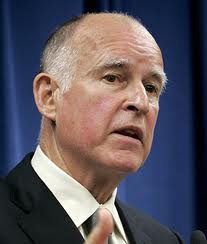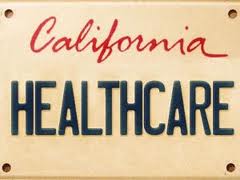What to Expect — And Not Expect — In Gov. Jerry Brown’s New Budget
The $130 billion budget Gov. Jerry Brown will unveil January 10 will largely be a yawner.
Relatively speaking anyway.
There’ll be no deluge of doom-and-gloom denunciations over the draconian measures the Democratic governor proposes as there were two years ago when the state faced an estimated $26.6 billion gap between revenues and spending commitments.
A $1.9 billion hole is all Brown and lawmakers must bridge for the fiscal year that begins July 1, according to November estimates by the Legislative Analyst’s Office.
 Brown may well set the estimated size of the shortfall even lower. More than half of it could be erased simply by postponing $1.1 billion in payments to various pots of state money raided in previous years to bolster the cash-starved general fund.
Brown may well set the estimated size of the shortfall even lower. More than half of it could be erased simply by postponing $1.1 billion in payments to various pots of state money raided in previous years to bolster the cash-starved general fund.
Urging caution and pledging restraint, the 74-year-old governor says:
“You can take this to the bank: We’re not going to spend money we can’t afford to spend. We have to do more with less,” Brown said at a January 8, Capitol press conference.
“(This year) is the year of fiscal discipline and living within our means. And I’m going to make that happen.”
he and his administration urge caution:
The Democratic governor’s budget plan would still be a yawner even if voters rejected Proposition 30 in November and state coffers weren’t buoyed by a projected $6 billion in new revenue from a seven year boost in state income taxes for wealthier Californians and a four-year one-quarter center hike in the sales tax.
Approval of nearly $6 billion in cuts — $5.4 billion falling on public schools — was included in the current budget as a backstop if the initiative didn’t pass.
Those cuts would have automatically taken effect, preventing Brown from having to take the heat for proposing them it in his new spending plan.
But even with passage of Proposition 30 and a brighter picture, the Brown administration is attempting to keep expectations low:
“While the state has made dramatic progress over the last two years to close its budget gaps, risks still remain to the economic forecast,” said H.D. Palmer, longtime spokesman for the Department of Finance. “One of the most significant could come as early as next month, as the federal government nears the deadline to take action to address the impending debt ceiling.”
The Legislative Analyst, which predicts the state may enjoy budget surpluses as early as 2014, also suggests restraint:
“Our multiyear budget forecast depends on a number of key econo0mic, policy and budgetary assumptions. Changes in these assumptions could dramatically lower – or even eliminate – our projected out-year operating surpluses.”
Legislative Republicans, none of whose votes are needed to pass a spending plan, strike a similar tone:
“The analyst suggests that by imposing tight reins on spending we should see a budget surplus within the next two to four years,” said Assemblyman Jeff Gorell, the Camarillo Republican who serves as vice-chair of the lower house’s Budget Committee.
“While it’s never easy to agree on a state budget during a recession, if the governor’s spending plan embraces the fiscal restraint he and the analyst talk about then I believe that kind of budget could be supported by Republicans as a way to help bring California back to solvency.”
Overall, it’s unlikely the Democratic governor will propose any major increases or decreases.
First, the size of the budget hole doesn’t require it.
Second, Brown can leave that to the Democratic majority Legislature, at least ideas on increasing spending.
“We’re beginning a new era in California. I think it will be a better era,” Senate President Pro Tempore Darrell Steinberg, a Sacramento Democrat, told reporters Monday January 7, saying the size of the budget problem will be far more “manageable” than what lawmakers and Brown have grappled with in prior years.
In legislative parlance, a more “manageable” budget allows the reductions of past years to be at least revisited and potentially restored.
Public Schools
Just as it has in prior Brown budgets, public schools receive roughly 50 cents of every dollar the state collects in taxes.
The state’s 1,032 districts are already slated to get $2 billion more beginning in July than they are receiving in the current year, according to the analyst.
Faced with a $5.4 billion reduction fi Proposition 30 failed, public schools welcome the budgetary boost. However, the state still has $12.8 billion in one-time obligations to schools, two-thirds of which are bumping payments owed now to future fiscal years.
Brown supports using much of the additional $2 billion schools will receive next fiscal year to pay down the $12.8 billion in outstanding education obligations.
The governor’s major proposal regarding schools doesn’t provide them with more than the formula-driven $2 billion increase. He simply creates a new way to distribute those funds that places fewer restrictions on how that money can be spent.
Brown and other supporters of the concept say it will ensure state dollars are earmarked so that a large amount is spent on pupils with greater educational challenges. Lower income and English-learners, for example.
“The current system is confusing. It’s patched together. It’s irrational. You can’t explain it. It’s not based on the needs of the students,” said Ted Lempert, resident of Children Now who supports overhauling the state’s funding formulas for schools but declined to discuss the specifics of Brown’s proposal. “Remaking the current system will offer flexibility, equity and clarity.”
While the idea of the state allowing more unfettered decision-making by local school spending is widely supported, opposition may arise later in budget talks as some districts discover the new allocation formulas mean a lower level of per-pupil funding than they enjoy now.
Health and Human Services
 At $45.2 billion, the second largest piece of the budget pie is health and human services programs, like welfare and in-home care for the aged and disabled.
At $45.2 billion, the second largest piece of the budget pie is health and human services programs, like welfare and in-home care for the aged and disabled.
Although full implementation of the federal Affordable Care Act is less than 12 months away, the budget probably won’t make any major changes to the path the state is already on.
The Democratic governor has said he will call a special legislative session during which implementation issues will be resolved.
Enrollment in Medi-Cal, the state’s health care program for the poor, is projected to climb by 2 million under the Affordable Care Act. But, again, Brown’s budget won’t make significant changes to the program.
One reason is the sizable reduction to services offered under the program. Another is that the Brown administration is negotiating with the Obama administration over a series of waivers, including one that would grant the state a bigger share of the savings it says will accrue by the gradual shifting of more than 1 million persons eligible for both Medi-Cal and federal Medicare benefits into managed care plans.
Courts and Higher Education
The University of California and the California State University system were cut by $1 billion two years ago. If Proposition 30 had failed, UC said it would have lost another $375 million in revenue.
Brown will likely give both more than they received in the current year budget — but not anywhere near the full $1 billion — and discourage both systems from boosting tuition or fees.
Both UC regents and CSU trustees postponed votes on potential fee increases for graduate students in November – at Brown’s urging.
In the current year, $419 million in one-time cuts were made to the state’s court system. The sharp reductions led to courtroom closures, higher filing fees and trial delays, among other things.
The court’s expectation was that Brown would restore in his new budget the $419 million they lost this year, some of the immediate impact blunted by borrowing from the state’s courthouse construction fund to pay operating costs.
In a December 14 press release, the Judicial Council expressed “concerns about additional cuts to court funding.”
Despite the concerns of the court, full elimination of previous year’s cutbacks won’t occur — at least in Brown’s January budget.
-30-
Filed under: Budget and Economy
Capitol Cliches Conversational Currency Great Moments in Capitol History News Budget and Economy California History Demographics Fundraising Governor Legislature/Legislation Politics State Agencies
Opinionation Overheard Today's Latin Lesson
Restaurant Raconteur Spotlight Trip to Tokyo Venting Warren Buffett Welcome Words That Aren't Heard in Committee Enough

No comments yet.
RSS feed for comments on this post.